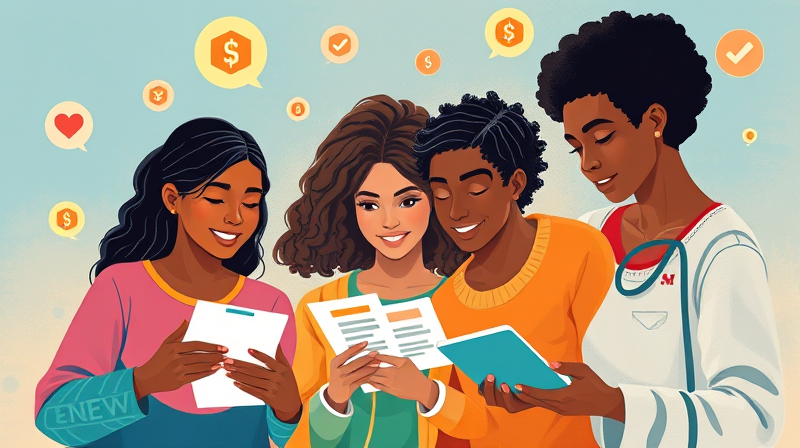In today’s fast-paced digital world, information spreads at lightning speed. Every day, we are bombarded with updates, news, and opinions that influence our beliefs and decisions. However, it is essential to pause and verify claims before sharing them. Empower yourself with the art of DIY fact-checking and join the movement to combat misinformation.
Recent changes in how misinformation is moderated, such as the shift away from centralized fact-checking programs, have placed the responsibility squarely on everyday users. This transition means that vigilance and critical thinking have become invaluable tools in maintaining a truthful digital space.
Understanding the Importance of Fact-Checking
Fact-checking is more than a method—it is a commitment to truth and transparency. When we share unverified information, we inadvertently contribute to the spread of falsehoods that can harm individuals, communities, and institutions. By taking time to verify facts, you not only protect your own credibility but also help foster a community of responsible digital citizens.
More than ever, the reliance on automated processes or crowd-sourced tools is insufficient to catch every misleading claim. Personal diligence is key. A fact-checking mindset involves questioning the source, cross-checking with reliable outlets, and seeking evidence before letting a post go live. This habit can lead to a more informed society.
Essential Steps for Effective DIY Fact-Checking
- Consult Reputable Sources: Utilize established fact-checking websites such as Snopes, Factcheck.org, Reuters Fact Check, and PolitiFact. These trusted outlets rely on transparent methods, accurate data, and rigorous standards to give you reliable information.
- Scrutinize the Source: Evaluate where the claim originates. Is it coming from a well-known news organization with a track record of credibility, or is it from an anonymous social media account? Scrutinizing your sources helps you assess the validity of the claim.
- Compare Multiple Sources: It's wise to check various trusted platforms to see if the information holds true across multiple reports. When diverse and independent outlets confirm the information, you can have more confidence in its accuracy.
- Examine the Evidence: Reliable claims are usually supported with evidence and documentation. Look for clear references, original footage, official statements, or documented data that substantiate the information provided.
- Beware of Sensationalism: Exaggerated headlines, emotional appeals, or urgent calls-to-action are often tactics used to spread misinformation quickly. Stay mindful of the context and proceed with caution when encountering these tactics.
By following these steps, you not only protect yourself from falling for misleading content but also contribute to a collective effort to uphold truth online.
The Role of Social Media Platforms and Community Efforts
Social media platforms have introduced various tools to flag or label information. However, research indicates that these measures, such as community notes and self-reporting features, might not always be fast enough to prevent the initial spread of misinformation. This gap underscores the need for individual action.
Each user has a pivotal role to play. While platforms are refining their algorithms and updating policies, your critical evaluation is the frontline defense against false claims. Taking a moment to verify sources and check evidence can significantly reduce the potential of misleading information gaining traction.
Moreover, by adopting these practices, you set an example for others. As more individuals embrace DIY fact-checking, the collective knowledge base grows, building a safer and more informed digital community.
When in Doubt, Pause and Verify
Perhaps the most important takeaway is to remain cautious when encountering claims that evoke strong emotions or seem too sensational to be true. If you have any doubt about a claim, it is always better to hold off on sharing it until you have confirmed its authenticity.
The act of pausing can prevent the spread of potentially hazardous misinformation. This is especially critical in times of crisis or when the information could have significant societal impacts. By doubting first and verifying later, you can protect not just yourself, but also the communities you are part of.
Remember, the power to shape a more truthful digital environment lies in every post, share, or comment you make. Every small step you take towards verifying a claim contributes to a larger movement of accountability and integrity online.
Inspiring a Culture of Truth
At its core, DIY fact-checking is about being responsible and caring for the community. It is an invitation to engage actively with the information around us and to promote a culture where truth and accuracy are celebrated. The next time you come across a headline or claim that stokes your curiosity, take the extra moment to verify—it is an investment in the well-being of your digital ecosystem.
Let this practice not be a burdensome chore, but a part of a mindful approach to consuming and sharing content. Embrace the role of a digital guardian, where your actions inspire others to be discerning and thoughtful. By nurturing this culture, you help pave the way for a world where information stands the test of time and truth prevails over misinformation.
Ultimately, the journey towards a more transparent and reliable internet begins with you. Your commitment to verifying claims and sharing accurate information plays a critical role in shaping a digital community that values truth over sensationalism.








